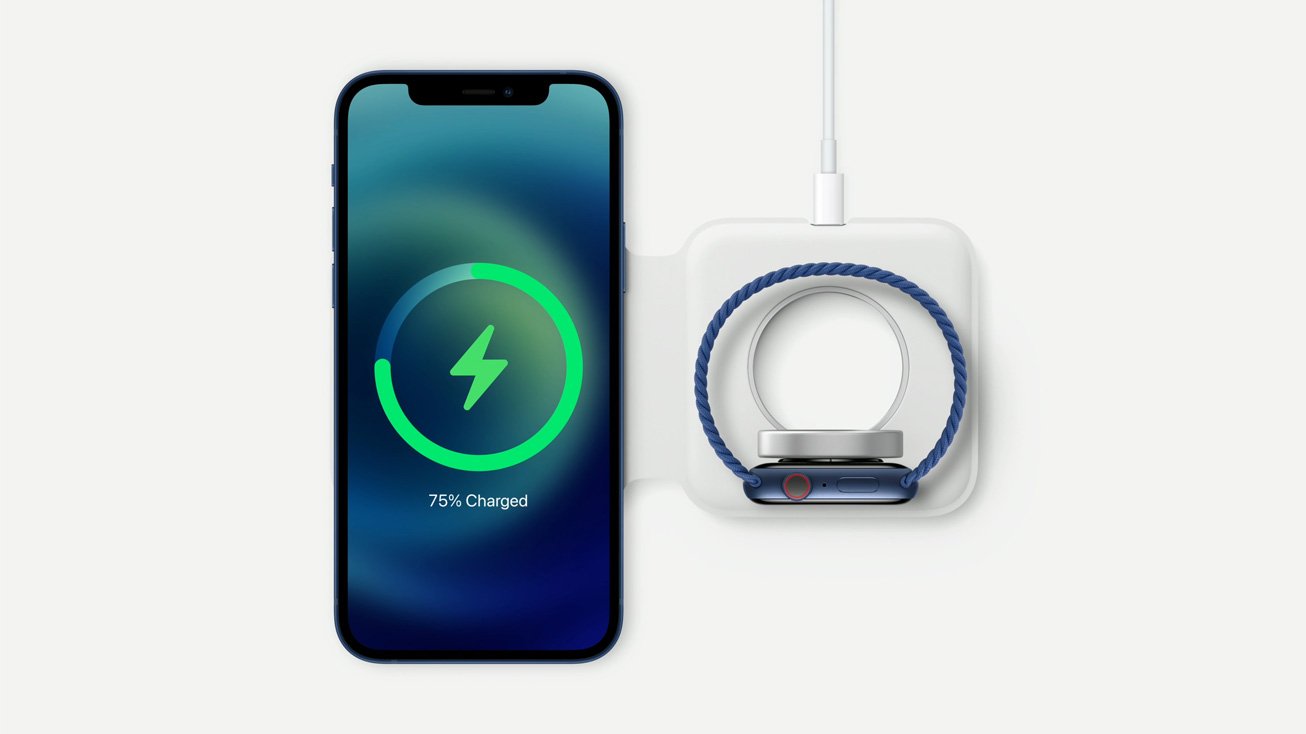Apple may have fumbled the ball with its iPhone 12 charger messaging

When Apple announced that the iPhone 12 would ship without a charger in the box, it didn't come as a surprise to many. The rumors had been persisting for months, and Apple's plan to take both charger and headphones out of its iPhone box would reportedly save the company a ton of shipping emissions, and hopefully some e-waste too. Turns out, it will actually save 2 million metric tons of carbon each year, the same as taking 450,000 cars off the road. Yet just a few days on from the announcement, and just a day after the iPhone 12 rolled out into stores, you can't quite help but feel like Apple may have missed the mark a little with its messaging around the decision to remove chargers from the iPhone's packaging, and that many customers, understandably, will be left deeply frustrated, and confused by the situation. Indeed, some of them likely already are.
Committed to the environment
Apple is clear that it is committed to reducing its net carbon emissions to zero by 2030 through a combination of reduction and offsetting. In the context of Apple's yearly emissions, the savings reportedly made by not shipping chargers and headphones to customers are actually pretty significant. From Apple:
Apple is also removing the power adapter and EarPods from iPhone packaging, further reducing carbon emissions and avoiding the mining and use of precious materials, which enables smaller and lighter packaging, and allows for 70 percent more boxes to be shipped on a pallet. Taken altogether, these changes will cut over 2 million metric tons of carbon emissions annually, equivalent to removing nearly 450,000 cars from the road per year.
2 million metric tons of saved emissions is nearly 8 percent of Apple's 25.1 million metric ton annual carbon footprint, 76% of which comes from product manufacturing. Apple has made a serious dent in its carbon footprint by reducing the size of its iPhone boxes, reportedly now shipping 70% more iPhone boxes on a single pallet.
But that isn't the only change it has made, as Apple notes:
For the first time, iPhone 12 models will utilize 100 percent recycled rare earth elements in all magnets, including the new camera, Taptic Engine, and MagSafe, as well as Apple's MagSafe accessories.
Make no mistake, Apple has made some big carbon savings with its iPhone 12, it just seems that multiple factors are influencing this, not just smaller boxes and less charging waste.
USB-C, but not USB-C
There's been a bit of talk following the launch of the iPhone 12 regarding two key Apple decisions. Firstly, to go with a Lightning port rather than a USB-C port on the iPhone, and secondly to include a USB-C to Lightning cable, rather than one compatible with USB-A. To address the latter first, I'll leave you in the capable hands of iMore's Bryan Wolfe, who has already addressed this issue:
Here's where Apple's environmental message starts to get muddled. By shipping a USB-C-to-Lightning cable with new iPhones, Apple is also encouraging users to embrace new technology. For some (my uneducated guess would be most), this will inevitably add to the cost of the device.As noted above, if the only Apple device currently in your home is an iPhone 11 or earlier, you can stick with the Lightning to USB cable/5W Power Adapter combination and go on with your day. And yet, doing so will mean not taking advantage of fast-charging technology that allows you to charge your new device up to 50% in about 30 minutes. For this, you need to purchase a 20W USB-C adapter from Apple ($19) or a third-party. In other words, if you want to embrace this new technology, Apple stands to benefit from your new charging needs.
The first issue was not a surprise. Rumors in the run-up to the iPhone 12 launch were fervently clear there would be no USB-C iPhone 12, and there are further rumors to suggest there will never be a USB-C iPhone. But there are already a lot of USB-C chargers out there, and Apple's other devices like the MacBook and its iPad also have USB-C charging ports, making the iPhone something of an enigma in its lineup.
Master your iPhone in minutes
iMore offers spot-on advice and guidance from our team of experts, with decades of Apple device experience to lean on. Learn more with iMore!
There are, of course, counter-arguments to this. Like the switch from 30-pin to Lightning, moving to another new charging standard would render lots of devices like docks, adapters, and speakers useless overnight, and if rumors of a portless iPhone next year are correct, then it wouldn't really make much sense to make this one change if it would only be relevant for a year or two.
Yet Apple's argument for ditching chargers is that many of us already have the chargers we need, but as Bryan notes above, a lot of Apple's users probably have USB-A rather than USB-C chargers, making the cable that comes with the iPhone 12 useless to a lot of its users. Similarly, if you buy the iPhone 12, you'll only be able to use the cable it comes with alongside a USB-C charger, making your old USB-A chargers obsolete.
Too many chargers
Apple has also added MagSafe, a brand new way to charge the iPhone through a magnetic cable that attaches to the back of your iPhone much like Apple Watch. Naturally, this is a separate, $40 accessory. This too doesn't come with a charging brick, but it does come with a USB-C cable, meaning you'll need to buy a USB-C charger separately if you don't have one already.
In one move, Apple has told its users it can't have a charger because it will reduce e-waste and shipping costs, whilst also introducing a brand new charging standard and fresh range of accessories, all of which contribute manufacturing and shipping emissions to Apple's carbon budget and drive up the consumer cost of the iPhone 12 experience.
Watt is going on
None of this even factors in fast-charging on the iPhone 12, and the various different speeds available. As confirmed this week, the iPhone 12 doesn't officially support fast charge using anything other than the 20W charger. Unofficially, our initial tests reveal the 18W charger is still pretty fast (if not just as fast), but according to Apple's official line, to enjoy a key feature of the iPhone 12, you need to buy a 20W charger from Apple unless you already own the 2020 iPad Air, which has been on sale for eight days.
Thanks to the introduction of MagSafe, and the need for a 20W charger if you want to fast charge, there are now a bewildering number of combinations you can use to charge your iPhone 12, either wirelessly, through MagSafe, or through the Lightning port, using either a Lightning to USB-A or USB-C cable, and, depending on which of those you chose, any number of adapters including Apple's 5W, 18W, or 20W charger. The combination you choose will have a big impact on whether your iPhone takes several hours or several minutes to charge and the longevity of your phone's battery over its lifecycle.
Perhaps more choice is good and gives users maximum flexibility to use accessories they already have, equally it may confuse many of Apple's new and old customers alike.
Confusing, but not a deal-breaker
As the headline suggests, I don't have much of a problem with Apple's actual decision to remove chargers from the iPhone's box. Back in June I fervently argued in favor of this exact move and was accordingly crucified by the internet. I do think, however, that the messaging around the decision has perhaps been a little clumsy, and that I, for one, really feel for the vast majority of Apple's regular customers as they try to wade through Lightning, USB-C, MagSafe, 18W, 20W, wireless, Qi, and more to figure out just what exactly they need to buy (or not buy) to make sure they can use their iPhone for more than 15 hours when they get home.
I'm sure Apple will have accounted for the impact of adding a new way to charge your iPhone (MagSafe) to the mix, as well as the cost and environmental impact of making and shipping those new accessories. And I'm happy to stand by Apple's statement regarding just how much carbon it can save shipping iPhones without chargers. But I absolutely sympathize with anyone who has been left feeling even a bit confused by what Apple is trying to achieve here, or anyone who has had to try and figure out which chargers they can and can't use and do and don't need to make the best of their iPhone 12. It's especially important to remember that the vast majority of Apple's customers are not tech-obsessive, latest and greatest, fans of the brand like many of us.
I wonder if this is how a lot of Apple's customers felt when Lightning was first introduced to the iPhone back in the day, and whether a little time to let the dust settle will reveal more clearly that Apple was perhaps a bit ahead of its time here. But doesn't mean it isn't a big change, or that customers aren't allowed to feel at least a little overwhelmed by the move, even if it is for the best in the long run.
In the meantime, if you're all at sea about how to charge your iPhone 12 and what you might need, a great starting point is our iPhone 12 charger guide and our roundup of the Best iPhone 12 chargers.

Stephen Warwick has written about Apple for five years at iMore and previously elsewhere. He covers all of iMore's latest breaking news regarding all of Apple's products and services, both hardware and software. Stephen has interviewed industry experts in a range of fields including finance, litigation, security, and more. He also specializes in curating and reviewing audio hardware and has experience beyond journalism in sound engineering, production, and design. Before becoming a writer Stephen studied Ancient History at University and also worked at Apple for more than two years. Stephen is also a host on the iMore show, a weekly podcast recorded live that discusses the latest in breaking Apple news, as well as featuring fun trivia about all things Apple. Follow him on Twitter @stephenwarwick9
